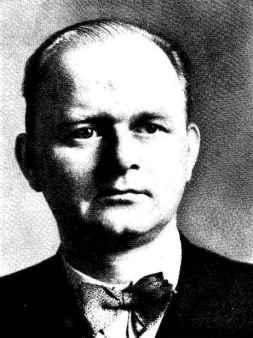Max Seeboth
Max Seeboth was born on 14 March 1904 in Magdeburg (Germany). He early started to play the piano, later received lessons with Hans Weitzig as well as attended composition and harmony courses with Georg Sbach. From the age of 17 he gave public piano recitals. After his schooldays Max Seeboth began to study music, art history and philosophy, first under Siegfried Cichy in Wroclaw, later under Hermann Abert, Johannes Spengler, Paul Hindemith, Eduard Spranger and Johannes Wolf in Berlin.
Max Seeboth returned to Magdeburg in the late 1920s and focussed on composing. His first works were received very well and in 1939 his Violin concerto and in 1940 his Piano concerto were awarded the Magdeburg music prize. Max Seeboth then received several composition commissions and was championed by Wilhelm Furtwängler and Paul Schmitz.
In 1943 Max Seeboth was drafted for military service and was held in English war captivity in Italy until 1946. He then moved to Emmerke near Hildesheim (Germany) and worked as a chorus master and also continued to compose. Due to the difficult economic and financial situation in Germany Max Seeboth emigrated to the US in 1951. He settled in Washington D.C. and worked as the chorus master at the Washington Saengerbund as well as a professor at the Montgomery College.
Max Seeboth died on 14 November 1967 in Washington D.C. (USA).
The Violin concerto by Max Seeboth was composed in 1939. The world premiere took place on 6 March 1939 with the Städtisches Orchester Magdeburg under Erich Böhlke and the soloist Otto Kobin.
The work was awarded the Magdeburger Musikpreis in 1939 and hailed in reviews as the composer's masterpiece. A review of the world premiere in the Zeitschrift für Musik wrote:
„Meanwhile the latest compositions by Max Seeboth proved that he already climbed to higher mastery. The Violin concerto also belongs intellectually and technically to the modern trend with its renunciation of artistic gimmickry. The work professes the early music with its strict parsimony of artistic expression on the basis of linear polyphony and expands with bold matter of course these harsh and fatefully unique expressions at once. [..]
In the midst of the two Allegros is the Adagio. Just because of this stunning affirmation the Violin concerto by Seeboth stands out among all the compositions written for the concertante violin in the last 20, 30 or more years and should have a place of honour in the repertoire of renowned soloists. This slow movement proclaims in deepest, believing seriousness about the hardship, the doubt and the beatitude.“
(Zeitschrift für Musik, 1939, volume 916, issue 7, page 722)
